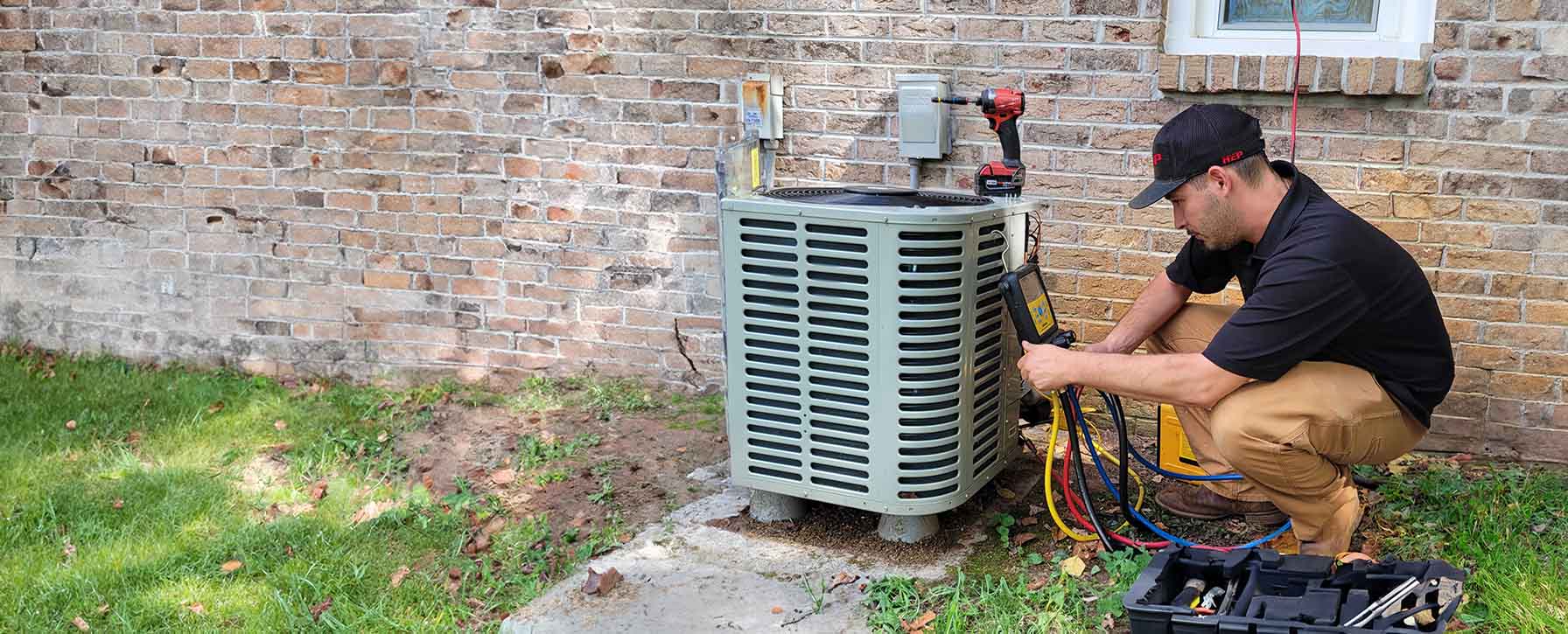

Energy Efficiency
Your trusted partner for professional home services. Quality workmanship, guaranteed satisfaction.




- HEP
- Energy Efficiency
Energy Efficiency | Ventilation and Air Quality | Heating and Air Conditioning | Palmer
When winter temperatures bite or summer highs soar in Palmer, HEP keeps your indoor climate perfectly balanced while trimming energy costs. Our technicians design and install high-efficiency furnaces, air conditioners, and heat pumps that sip power but deliver generous comfort. By pairing smart controls with properly sized equipment and sealing drafts others miss, we help you enjoy consistent temperatures and noticeably lower utility bills—all backed by responsive local service.
Yet comfort is more than temperature alone; it’s also the air you breathe. HEP integrates advanced filtration, balanced airflow, and cutting-edge heat-recovery ventilation to elevate ventilation and air quality throughout your home or business. From removing airborne pollutants to controlling humidity, we create fresher, healthier spaces where families thrive and employees stay productive. Reach out today and discover how easy it can be to feel better while spending less.
FAQs
Why is energy-efficient heating and cooling so important in Palmer’s climate?
Palmer experiences long, cold winters and mild summers, which means heating accounts for most of a home’s annual energy use. An energy-efficient HVAC system reduces fuel or electricity consumption, lowers monthly bills, and lessens wear on equipment. Because efficient units run more steadily at lower outputs, they also provide more even temperatures, quieter operation, and better humidity control—critical for comfort during Palmer’s dry, sub-arctic winters.
Which types of HVAC systems offer the best energy savings for Palmer homeowners?
For heating, cold-climate air-source heat pumps and high-efficiency condensing gas furnaces (95% AFUE or higher) deliver the greatest savings. Many residents pair a heat pump with a high-efficiency furnace for a dual-fuel setup: the heat pump covers moderate outdoor temperatures, while the furnace handles extreme cold. In homes without ductwork, variable-speed ductless mini-splits are an efficient option. For cooling, the same heat pump can provide SEER2-rated air conditioning, eliminating the need for a separate AC unit.
How does ventilation affect both efficiency and indoor air quality (IAQ)?
Tight, well-insulated homes save energy but can trap moisture, carbon dioxide, and pollutants such as VOCs and allergens. Installing a balanced mechanical ventilation system—typically a heat-recovery ventilator (HRV) or energy-recovery ventilator (ERV)—solves this problem by exchanging stale indoor air with fresh outdoor air while transferring up to 80% of the heat between the two streams. This keeps IAQ high without wasting the energy invested in heating (or cooling) the incoming air.
How often should I service my HVAC and ventilation equipment to maintain peak efficiency?
Professional maintenance is recommended at least once a year for heating equipment and once a year for cooling systems—ideally in early fall and spring, respectively. During a tune-up, a certified technician will clean heat-exchange surfaces, test safety controls, inspect refrigerant levels, tighten electrical connections, and verify airflow. HRV/ERV cores and filters should be cleaned or replaced every 3–6 months. Routine maintenance can restore up to 10–15% of lost efficiency and extends equipment life.
Are there local rebates or incentives for upgrading to energy-efficient HVAC in Palmer?
Yes. The Alaska Housing Finance Corporation (AHFC) offers the Home Energy Rebate Program, which can reimburse a portion of the cost of high-efficiency furnaces, boilers, and heat pumps after an energy rating. In addition, many utilities—including Matanuska Electric Association—offer rebates for ENERGY STAR® air-source heat pumps and smart thermostats. Federal tax credits under the Inflation Reduction Act (Section 25C) can cover up to 30% of qualifying equipment and installation costs, subject to annual caps.
What simple actions can I take to improve indoor air quality without major renovations?
1) Replace or clean HVAC filters every 1–3 months. Use at least a MERV-8 filter, upgrading to MERV-13 if your system’s fan can handle it. 2) Run bathroom and kitchen exhaust fans during and after cooking or showering to remove moisture and pollutants. 3) Keep humidity between 30–50% with a whole-house humidifier or portable unit; overly dry air in winter aggravates respiratory issues. 4) Use low-VOC paints, cleaning supplies, and furnishings to limit chemical off-gassing. 5) Vacuum with a HEPA-filtered vacuum weekly and wipe hard surfaces with a damp cloth to reduce dust and allergens. 6) If anyone in the household has allergies or asthma, consider adding a portable air purifier with a true HEPA filter in bedrooms and living areas.